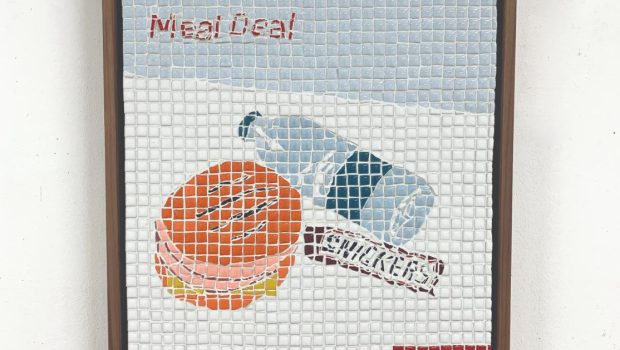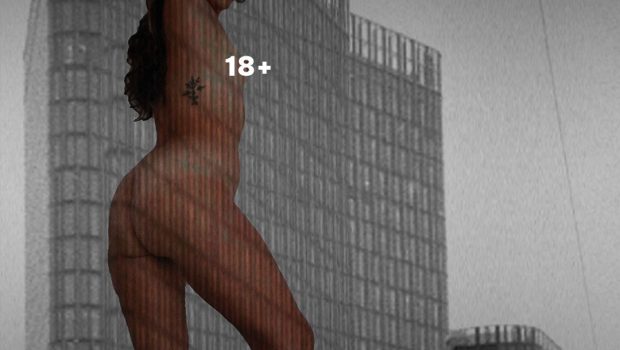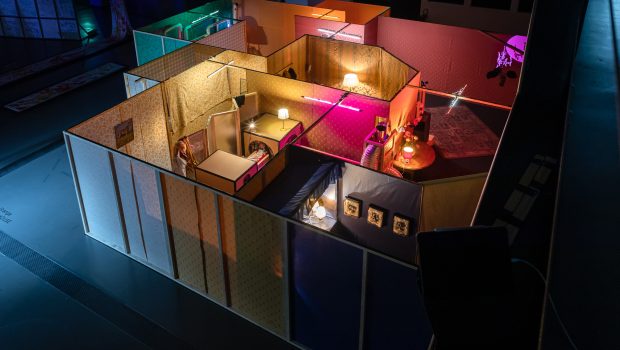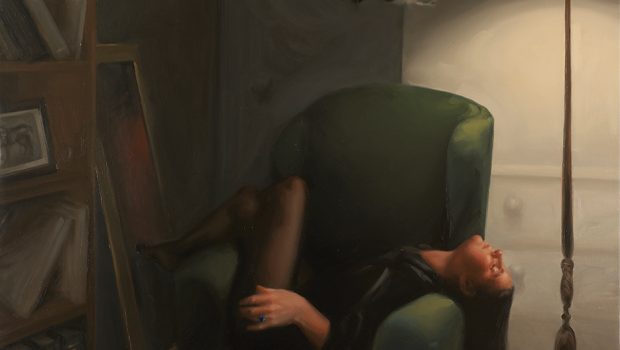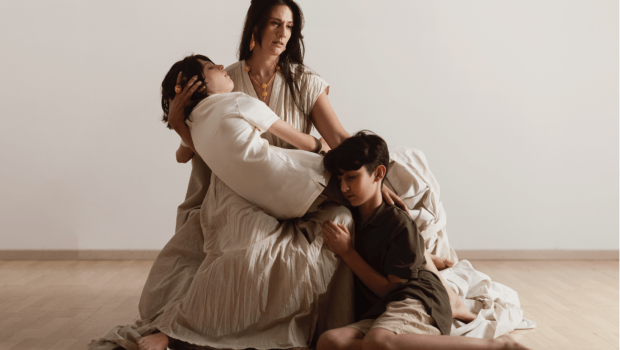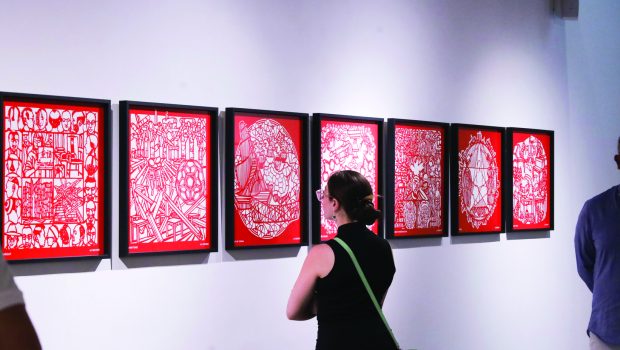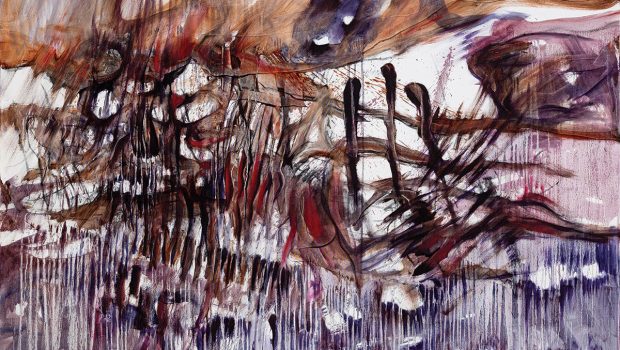Nothing Happens Before it’s Consumed
MOMENTUM’s exhibition Art from Elsewhere: Deep Throat, at Valletta Contemporary
Valletta Contemporary Gallery presents Art from Elsewhere: Deep Throat, an exhibition organised by MOMENTUM, a platform for time-based art in Berlin. Deep Throat marks MOMENTUM’s 15th anniversary and features 21 artists from the platform’s collection alongside invited contributors. The exhibition frames the contemporary spectacle of politics as pornographic performance. In an age when politicians are also TV stars, where every move and moment on stage – from assassinations to awkward hugs – is televised, broadcast to the world and consumed by the general public obsessed with spectacle, Deep Throat investigates our collective inability to look away from the performative antics of the most powerful people in the world. In an age when politics has been reduced to a spectacle, what remains of the spectator, watching anonymously from a dark room?
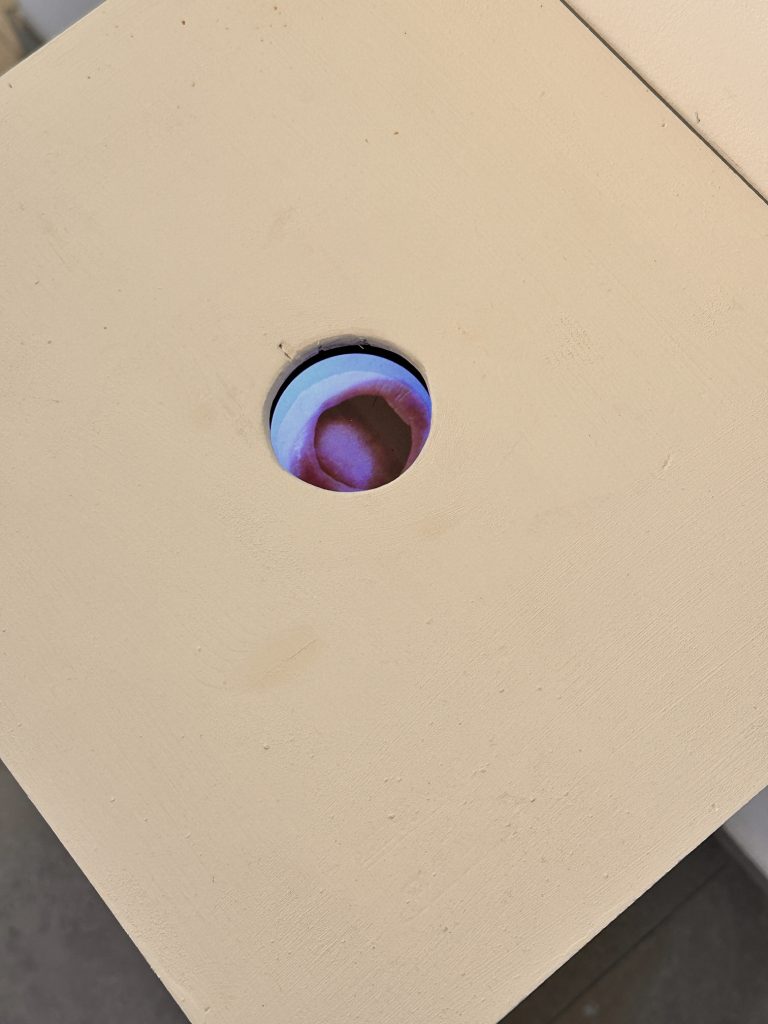
“Artists are not magic healers of our civilisation; that’s not the role of art, but what art can do is pull our humanity back from the brink.”
The title plays with the multiple meanings of the word ‘deep throat’, positioning it as a locus of the political and the pornographic. ‘Deep Throat’, as is now well known, is the pseudonym used by Mark Felt to leak information on the Watergate scandal to Washington Post journalists in 1972. At the same time, it is the name of the pornographic film starring Linda Lovelace that popularised the act and introduced America to a new kind of sexual performance, also released in 1972. Years later, in 1986, Lovelace testified that, due to the abusive and controlling relationship with her then husband, Chuck Traynor, “virtually every time someone watches that movie, they’re watching me being raped,” so the film also came to represent the impossibility of separating consumptive voyeurism from violence.
I meet Rachel Rits-Volloch, the founder of MOMENTUM and co-curator of Deep Throat. The exhibition features an eclectic selection of video works alongside sculpture, painting, tapestry, installation and even books. All of the work, in one way or another, is political.
“Ever since we were glued to our screens during COVID and in the aftermath, it became more and more apparent that it’s just repulsive watching the news. I’m sickened by the way violence is sensationalised, the showing of destroyed bodies, and the presentation, in this almost gleeful way, of wars documented with death tolls, with the statistics of how many died on each side. I mean, it’s not a football match, or maybe it is. Maybe war is the new sport, and the shameless lowering of the bar by politicians, who will remain unnamed—but it’s obvious who they are—has denigrated the role of head of state to such a degree that they strut and rant and expose themselves all over social media like some minor starlet hoping to get a role in Hollywood. I began to realise that politics is a new pornography. We are addicted. We can’t walk away from our screens, and when we’re not watching politicians or movie stars self-combust, we’re watching ourselves, the addiction to revealing everything on social media. That’s a kind of pornography as well. I don’t know how people justify it, but everyone is paranoid about surveillance and state control. Well, why? Why are you worried about surveillance when you’re revealing everything anyway?”
We stand in front of a stop-motion animation titled The Gooey Gentleman by Zhou Xiaohu. I watch two figures move jerkily across the screen. Drawn onto naked bodies and described in the exhibition text as “a striptease gone deliciously wrong”, the figures tease, flirt and fight in an escalating performance that ultimately consumes both of them. The power dynamic between the performer and watcher in the video is continuously reversed, until you are not sure who is instigating and who is responding, who is performing and who is watching. This work becomes an allegory for the dialectics of spectatorship: the contemporary banality of a society running on the currency of spectacle, of being both consumer and the object of consumption. It is worth mentioning that Xiaohu is a Chinese artist, and even though his work is stylised and comical, it has been banned in his home country because of nudity and political content. As the exhibition text goes on to state, “[i]t reminds us that laughter can be its own form of resistance, that satire and seduction share a pulse.”
And where does art come into it for you? I ask.
![The artist Gabriel D. Doucet Donida performing alongside his installation "The Confessional / Infinite Habitat" at Deep Throat, an exhibition organised by MOMENTUM. [The Confessional will be exhibited at GROUND 99 - a satellite event at The Malta Biennale 2026 curated by Rachel Rits-Volloch, 12 March - 16 May 2026]](https://artpaper.press/app/uploads/2025/11/IMG_2548_copy_40-768x1024.jpg)
“We’ve gone from postmodern, to post-truth, post-digital already, and very soon, post-human. And what are we if we lose human empathy?”
“There are many inconsistencies and dualities in our culture, and I am not saying that this exhibition solves any of them, but it’s an overview of how 21 very diverse artists, from 11 countries and three generations, address these issues. Artists are not magic healers of our civilisation; that’s not the role of art, but what art can do is pull our humanity back from the brink. This incessant watching of vacuous content on television, on blogs, on all forms of media, is sapping our humanity. We’re losing empathy by the day, and maybe that’s what art can do: remind us how to empathise, remind us what human feeling actually is, and that’s increasingly necessary in a world of post-everything. We’ve gone from postmodern, to post-truth, post-digital already, and very soon, post-human. And what are we if we lose human empathy?”
Despite the subversive and overtly political edge of the work on show, there is indeed a lot of humanity in Deep Throat, leading viewers to a place of sensitivity and vulnerability. Andreas Blank, for example, makes beautiful still-life sculptures out of alabaster and marble. Each of Blank’s objects immortalises trivial or transient items from everyday life (plastic bags and beauty products), indirectly documenting unseen and overlooked domestic moments, those fleeting instances that are not made for consumption, or broadcast as part of the spectacle-building exercise of constructing our lives in the eyes of others.
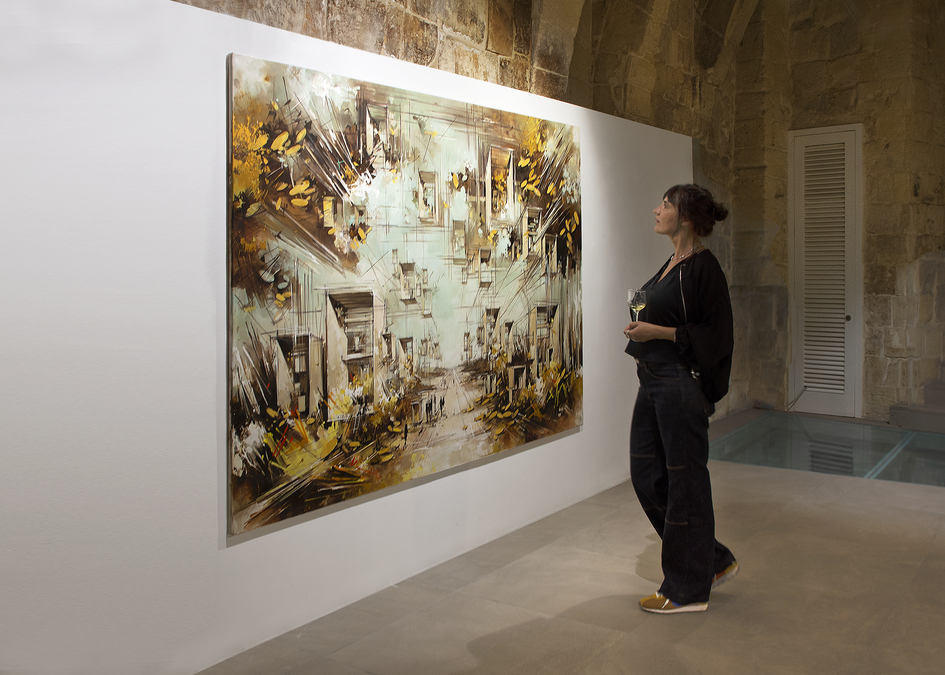
Much of the art on show, like Blank’s, are not time-based in the conventional sense of the word. Traditionally, time-based media are understood as film and performance, works that have a duration, a tangible beginning and an end. However, by including sculpture and painting, Rits-Volloch applies a more flexible definition, expanding the idea into something broader.
“I always ask my artists how they define time-based art, and if they convince me, I allow it. For example, Andreas Blank works with stone; he sees his practice as immensely time-based because stone is the actualisation of geological time. For me, the process of production also counts – the time and labour, great physical labour in the case of Blank, as he carves these sculptures with his own hands – dedicated to the creative act.”
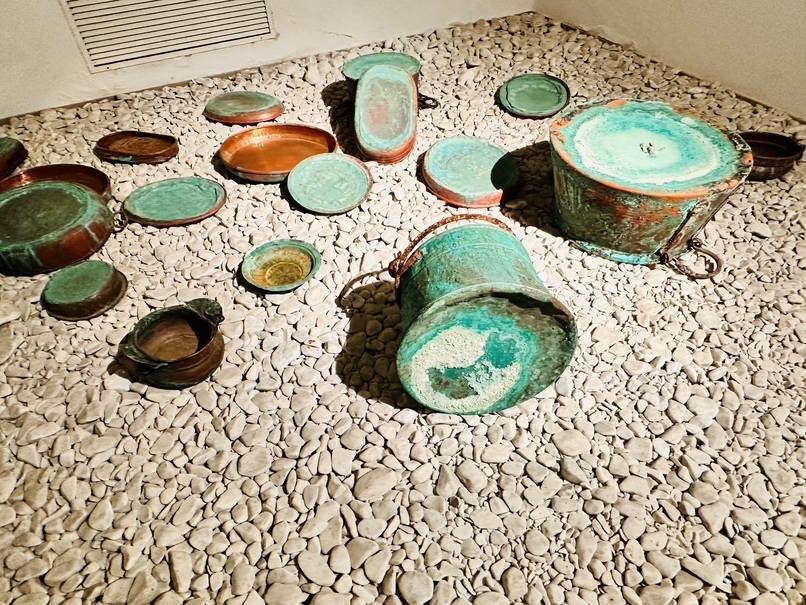
“Mariana Hahn provides another example and definition of time-based art. Basins in Copper is a work she created for the first Malta Biennale, where she initiated an alchemical process that is still continuing. She filled copper basins with ocean water, salt water, and the result is this wonderful transformation. The work looks very different now than it did in the original presentation in 2024.”
Mariana Hahn’s work illustrates the effects of time on the objects in our world: the soft influence of one thing on another over a long period of time. In Hahn’s case, the salt water in the copper basins has oxidised the orange metal, turning it various shades of blue and turquoise. It makes me think about relationships, and human beings changing each other, at first imperceptibly but eventually beyond recognition. Perhaps more nefariously and in line with the exhibition, Basins in Copper also invokes the soft rot of endless social media scrolling, time drifting into a void as people in dark rooms all around the world are bathed in flickering phone-glow, our bodies and minds becoming a site for the convergence of intimacy and the information industrial complex.
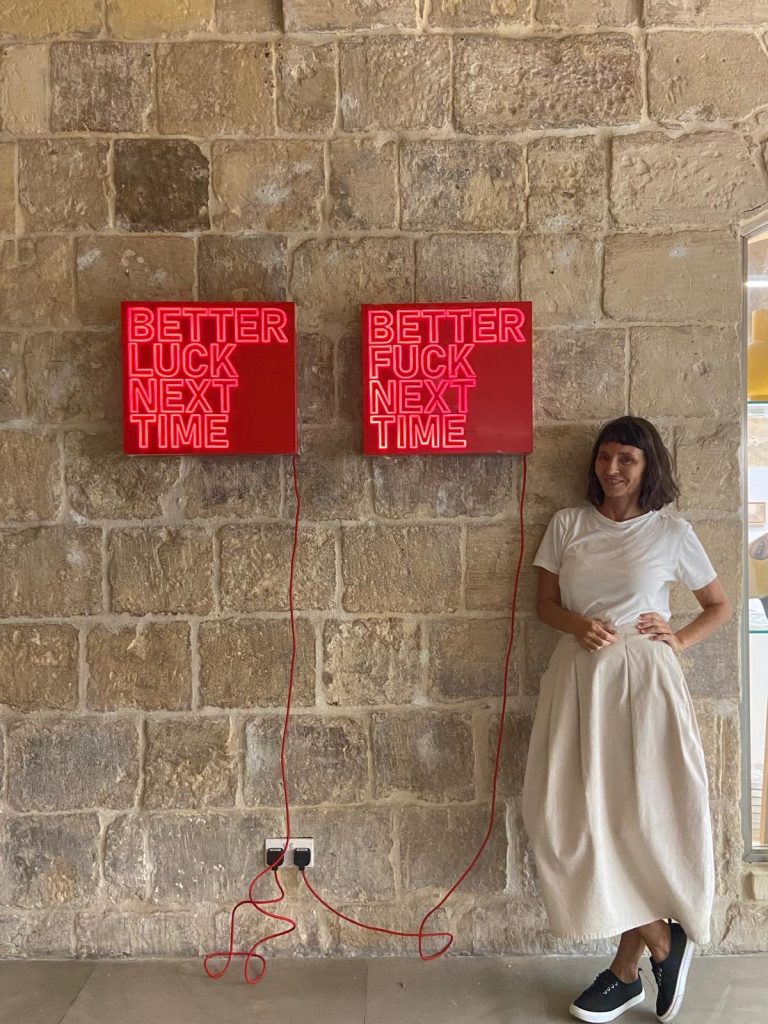
It becomes clear that MOMENTUM is a platform for supporting artists in all sorts of ways, and this exhibition creates little windows into different worlds. Including the qualifier ‘time-based’ allows a shifting of focus onto relationality, process and change through time, both long- and short-term. I put the question to Rits-Volloch.
“Yes. And I am a great fan of self-reflexivity and spectatorship too. I also tend to think that much of the time-based process in art occurs in the reading of the work by the spectator. You’re not going to instantly take in a painting. It is supposedly a still image, and yet a good painting unfolds a narrative within itself, and to read it, one has to follow that narrative, and that takes time. Even though it’s a still image, it is a product, in its making and its encounter, of time. So to me, the obvious definition isn’t the only one.”
Implicit here, it seems, is a meditation on consumption more generally, the pornographic consumption of the world, politics and ourselves on the one hand, and the emancipatory consumption of art that the exhibition is suggesting might offer a window into a different world and way of being.
“It’s been proven that the same centres of our brain are activated when we think or observe an action as when we perform an action. When you watch reality TV, or the posture of politicians, which are increasingly identical, what do we feel?”
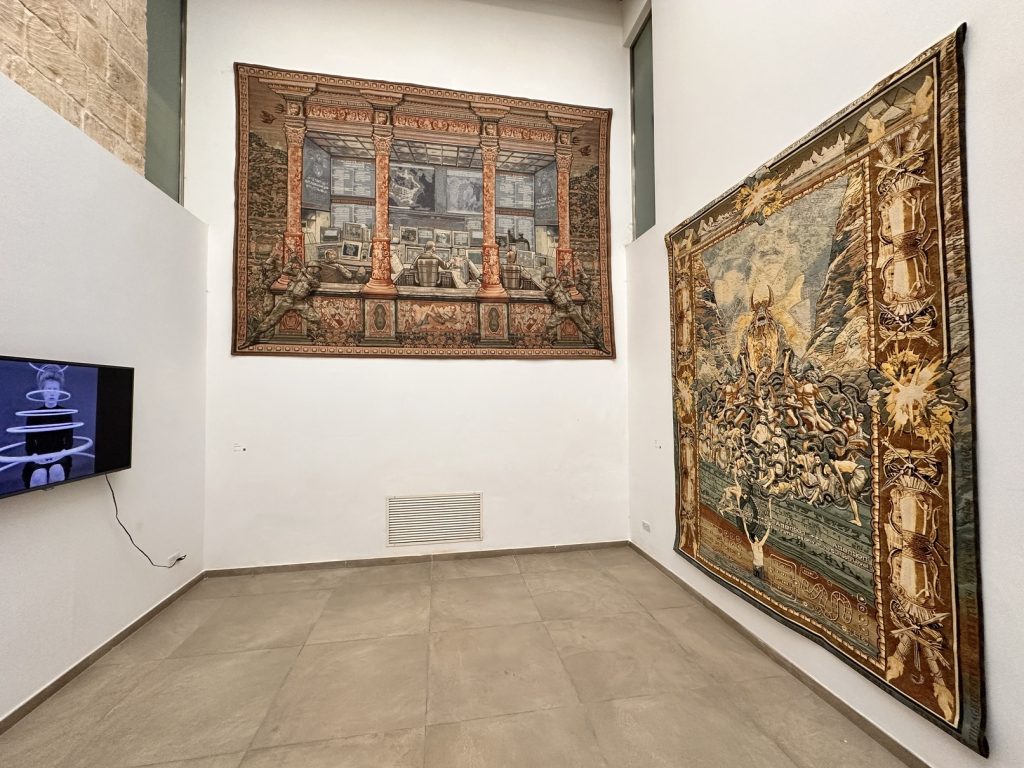
I end my visit by wandering downstairs to take another look at Margret Eicher’s monumental tapestries. Eicher’s work exemplifies the multiple temporalities we’ve been discussing. Her work weaves baroque and ancient motifs with video game characters, drowning refugees, bombed-out cities, and men sitting comfortably behind computer screens, exerting power and orchestrating control from air-conditioned rooms. The tapestries look handmade, but they are produced on computer-guided looms. They allude back to the great court tapestries of earlier centuries, made in order to glorify God and kingdom, but at the same time they are entirely different, artefacts of the contemporary moment.
It is dark outside when I leave the gallery. Stepping into the street, a few lines from Don DeLillo’s 1991 novel Mao II come to mind, a portent, or perhaps a warning, from the cusp of the information explosion: “Two lovers quarrel in the back of a taxi and a question becomes implicit in the event. Who will write the book and who will play the lovers in the movie? Everything seeks its own heightened version. Or to put it this way, nothing happens until it’s consumed” (Mao II, 1991, p. 44).
Art From Elsewhere: DEEP THROAT is a collective exhibition with: AES+F, Inna Artemova, Aaron Bezzina, Andreas Blank, Claudia Chaseling, Gabriel Doucet Donida, Margret Eicher, Nezaket Ekici, Mariana Hahn, Anna Jungjohan, Sarah Lüdemann (Beauham), Duška Malešević, Shahar Marcus, Milovan Destil Markovic, Almagul Menlibayeva, Kirsten Palz, Nina E. Schönefeld, David Szauder, Vadim Zakharov, Zhou Xiaohu. This interview by Gabriel Zammit with the curator, Rachel Rits-Volloch, is sponsored by People & Skin.
https://www.momentumworldwide.org
Finissage: 29 November 2025, 6 – 9pm at Valletta Contemporary.


